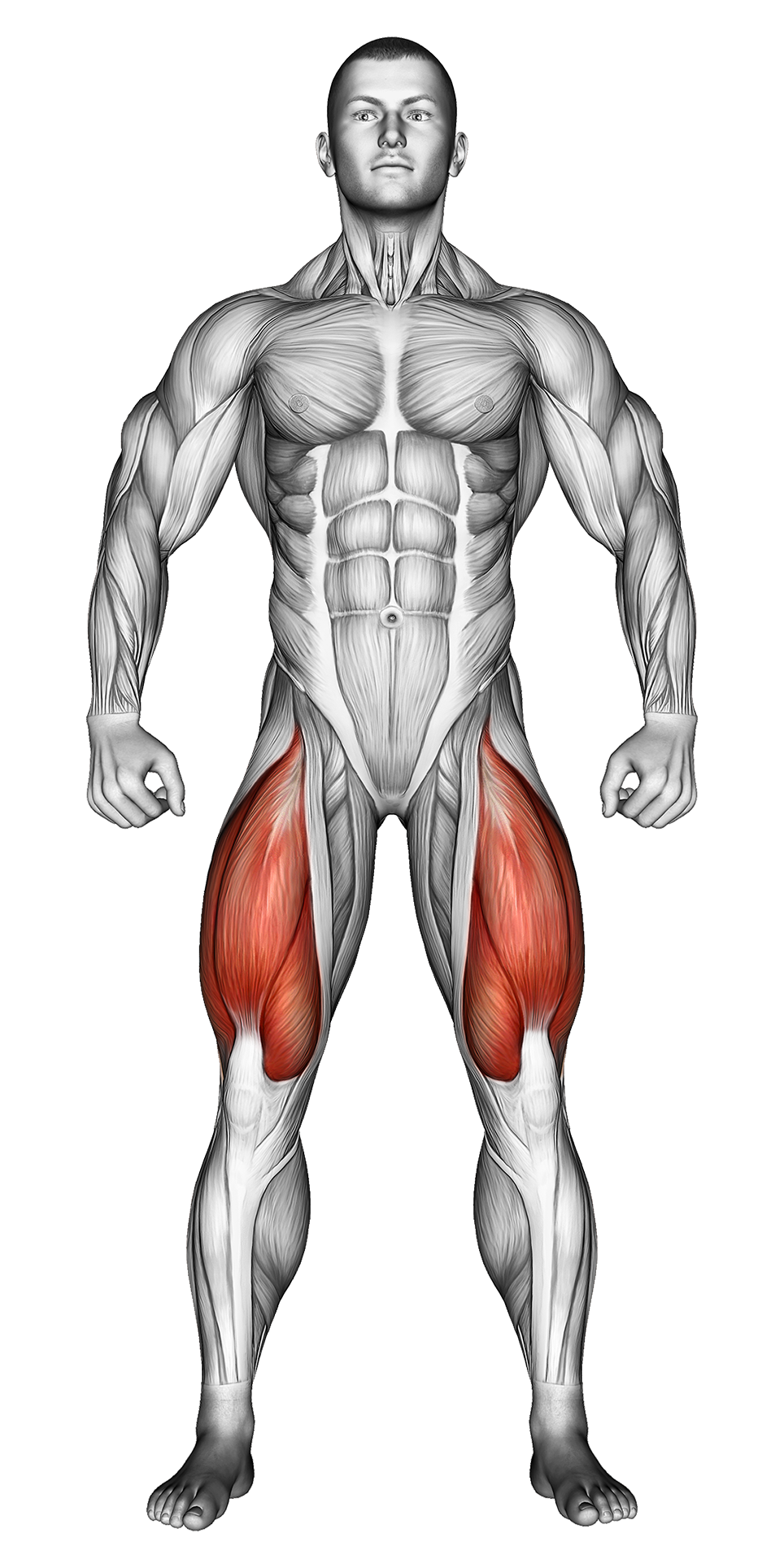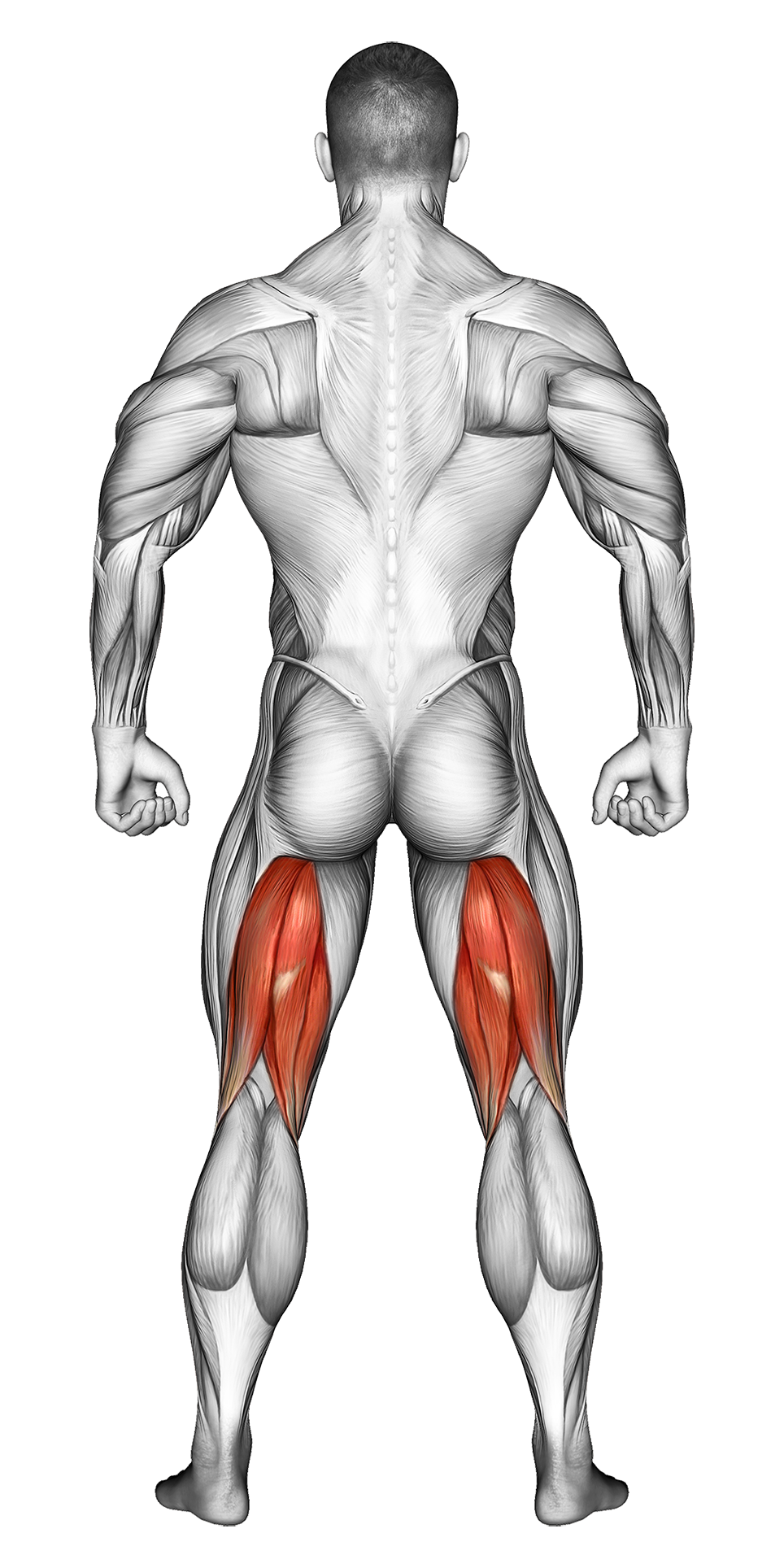Frog Jumps: Video Tutorial & Exercise Guide

Written By: Ether Brown
Updated: Oct 13, 2024
| Workout | Frog Jumps |
| Primary Muscle Group | Quads |
| Secondary Muscle Group | Glutes, Hamstrings |
| Equipment Required | Bodyweight |
| Force Type | N/A |
| Mechanics | Compound |
| Exercise Type | Strength/ Cardio |
| Difficulty | Beginner |
Frog Jumps: Video Tutorial & Exercise Guide
Secondary Muscles Group
Frog Jumps: Step-by-Step Guide
- Step 1: Stand with your feet slightly wider than shoulder-width apart, toes pointed slightly outward. Lower into a squat position by bending your knees and pushing your hips back.
- Step 2: Place your hands on the floor between your legs, keeping your chest up and core engaged. Make sure your knees track over your toes, and avoid rounding your back.
- Step 3: Explosively push through your legs and jump forward, swinging your arms forward to propel yourself. Jump as far as possible while maintaining balance.
- Step 4: Land softly with bent knees, returning to a squat position. Make sure your knees don’t cave inward and your chest stays up.
- Step 5: Immediately repeat the jump forward, maintaining continuous movement. Perform for the desired number of reps or for a specific distance.
Frog Jumps: Overview
Frog Jumps are a high-intensity plyometric exercise that targets the lower body, including the quads, glutes, hamstrings, and calves. This explosive movement also engages your core and improves overall cardiovascular endurance.
Frog Jumps are great for developing power and strength in the legs while enhancing agility and coordination. They also elevate your heart rate, making them an excellent fat-burning and conditioning exercise.
Frog Jumps: Benefits
Frog Jumps build explosive strength in your lower body, improving your ability to jump and move quickly. They also enhance coordination and agility, making them an ideal exercise for athletes or anyone looking to improve their overall fitness.
This movement is also excellent for burning calories and boosting cardiovascular endurance. It helps develop fast-twitch muscle fibers, which are important for quick, powerful movements.
Frog Jumps: Pro Tips & Advanced Techniques
Focus on landing softly with your knees bent to absorb the impact and protect your joints. Keep your chest up and core tight throughout the movement to maintain proper posture and balance. For an added challenge, increase the distance of each jump or try doing Frog Jumps uphill to further engage your legs and glutes.
Frog Jumps: Progression Plan
Beginner
Intermediate
Advanced
Frog Jumps: Frequently Asked Questions (FAQs)
What muscles do Frog Jumps target?
+Frog Jumps primarily target the quads, glutes, hamstrings, and calves, while also engaging the core for stability and power during the jump.
How can I make Frog Jumps easier?
+To make the exercise easier, focus on smaller jumps and fewer reps. You can also perform the movement slowly until you feel comfortable with the explosive jumping action.
How do I increase the difficulty of Frog Jumps?
+To make Frog Jumps more challenging, increase the distance of each jump, perform more repetitions, or try adding resistance by wearing a weighted vest.
How often should I do Frog Jumps?
+Incorporate Frog Jumps 1-2 times per week as part of your lower-body or plyometric workout routine. They pair well with strength-building exercises like squats and lunges.
What common mistakes should I avoid?
+Avoid landing with locked knees or using improper posture. Focus on landing softly with bent knees and maintaining an upright chest to protect your joints and maximize efficiency.
Share
Don’t Wish for It, Work for It – Join the FlexXP Newsletter Today!
Thank you for signing up for the FlexXP Newsletter!
This site is protected and the Google Privacy Policy and Terms of Service apply.


